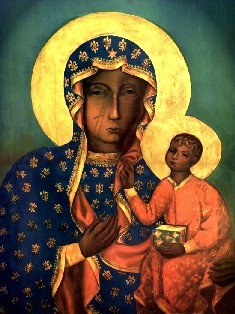 The Church has offered us a "Marian sandwich." Let me explain. This week we are honoring the Mother of God with three distinct memorials: The Nativity of Mary (Sept. 8) and Our Lady of Sorrows (Sept 15) and today the commemoration of the Holy Name of Mary. In liturgical history this feast has been observed on various days before settling on this day. The feast was reintroduced to our Roman Missal by Pope John Paul II.
The Church has offered us a "Marian sandwich." Let me explain. This week we are honoring the Mother of God with three distinct memorials: The Nativity of Mary (Sept. 8) and Our Lady of Sorrows (Sept 15) and today the commemoration of the Holy Name of Mary. In liturgical history this feast has been observed on various days before settling on this day. The feast was reintroduced to our Roman Missal by Pope John Paul II.The Roman Martyrology writes,
The Holy Name of the Blessed Virgin Mary, a day on which the inexpressible love of the Mother of God for her Holy Child is recalled, and the eyes of the faithful are directed to the figure of the Mother of the Redeemer, for them to invoke with devotion.
The Church prays,
Grant, we pray, almighty God, that, for all who celebrate the glorious Name of the Blessed Virgin Mary, she may obtain your merciful favor.
We know that her parents Saints Joachim and Anne gave her the name Miryanm (meaning Lady or sovereign). Liturgical historians tell us this particular feast has its origins in early 16th century Spain in 1683 Pope Innocent XI put the feast on the Church's Universal Calendar as a recognition of the victory of the Polish King John Sobieski III over the Turks who were in the process of invading Vienna.
It is said that before the battle with the Turks King John prayed before the icon of Our Lady of Czestochowa.
In repelling the Turks there was gift left for Westerns: Turkish coffee, known to many as "Capuccino." If you've ever had Turkish coffee you'll would remember that it has a bitter taste but the Viennese found that if you add milk and strain the mud out of the coffee, the drink has a palatable taste.
In the face of the attack on the US Embassy in Libya today where four Americans were killed today, let us pray for peace in the Arab lands, the eternal repose of the US Embassy staff.


Leave a comment